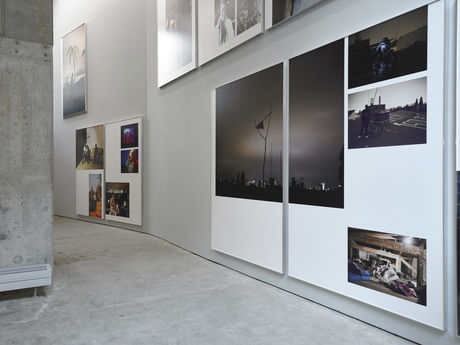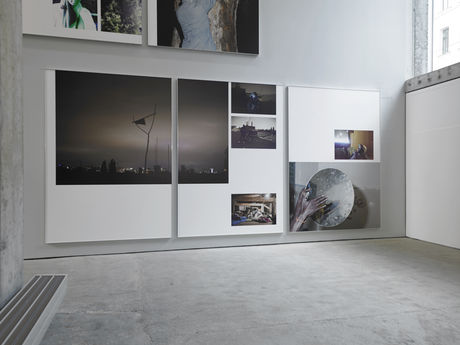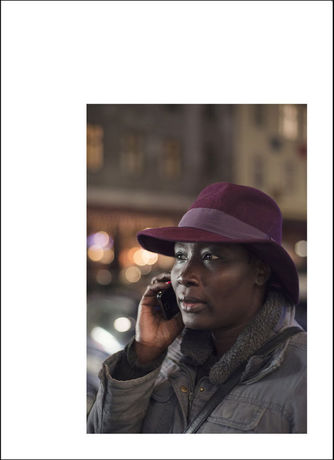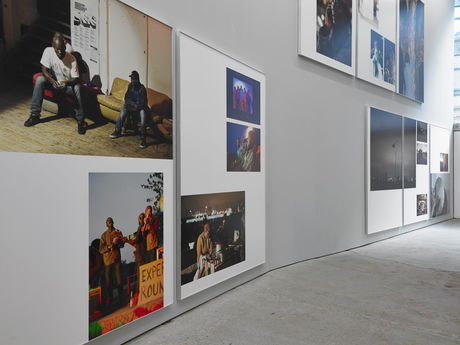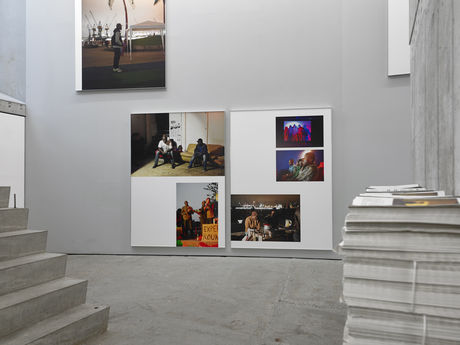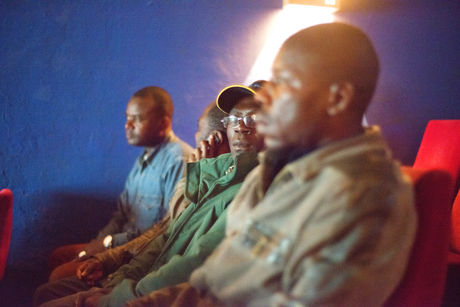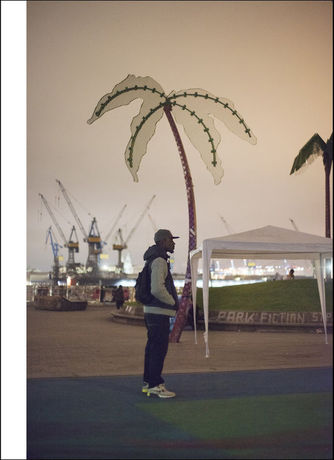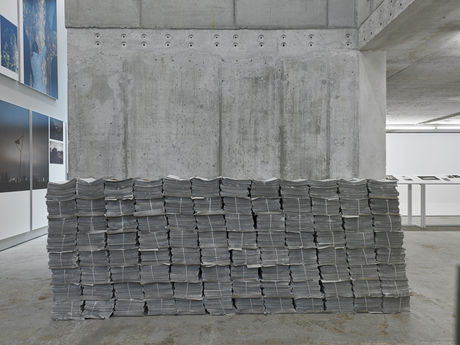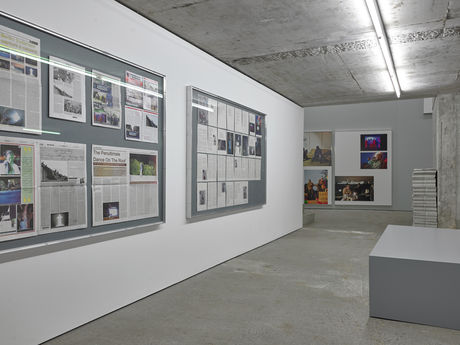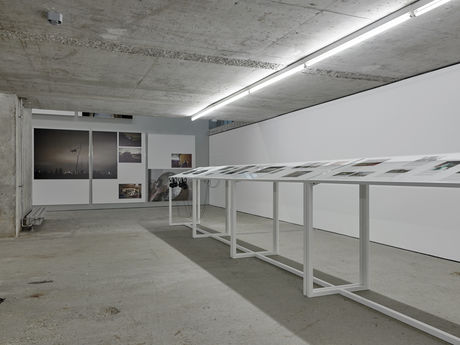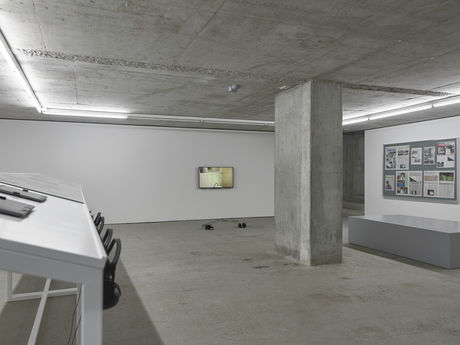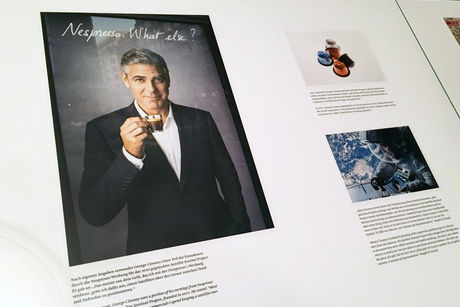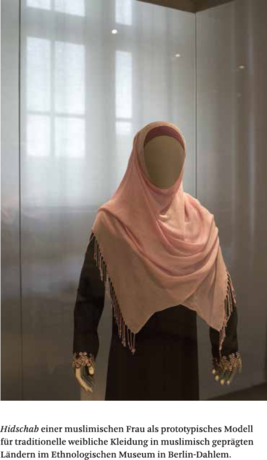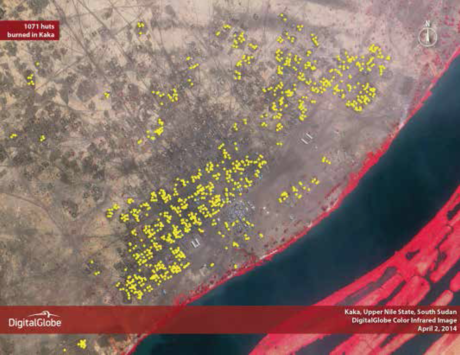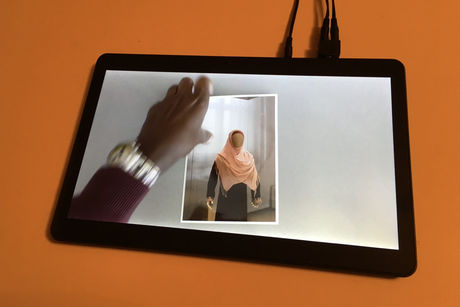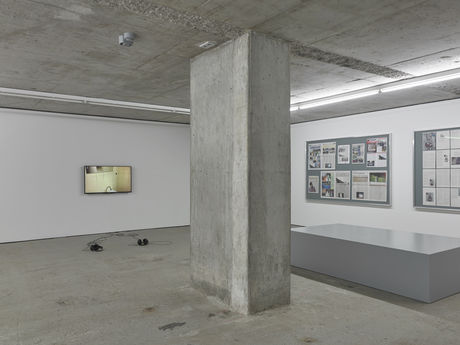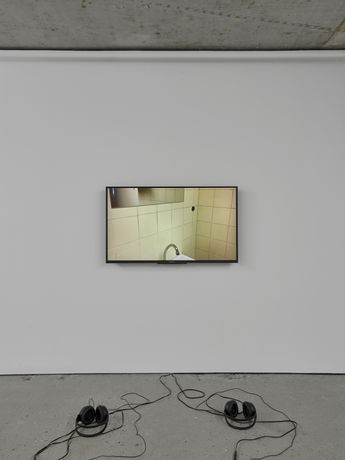Apr 30–Jun 12, 2016
When people see no way out of their predicaments, they may decide to simply take the bull by the horns. Some then scale heights – they climb roofs, cross mountain ranges, stand on barricades. Where voices rise up unexpectedly, where bodies expose themselves to the harsh light of the public or worse, the insurgency of the political subject begins, and a boundary is crossed that separates invisibility from visibility. What fell on deaf ears is suddenly heard. Climbing roofs and mountains is one way to cross this line; George Clooney made Tobias Zielony see that going into orbit is another. More on that below.
In September 2014, a group of refugees occupied the roof of Berlin’s Gerhard-Hauptmann-Schule to demand their right to self-determination. The protest was part of a collective movement that generated awareness in the German public for the political demands of migrants; some of these demands were subsequently met. Since February 2014, Zielony has followed several movement activists in Hamburg and Berlin, photographing the occupation of the roof; of Napuli Langa, who lived in a tree for five days to protest the removal of the refugee camp on Oranienplatz in Kreuzberg; and of scenes in Hamburg’s St. Pauli neighborhood. Each image contributes to a narrative about the political subjectivity of the refugees, about their status as citizens.
Zielony’s camera captures people on the margins of social recognition in those moments when they seek to limn their self-image. The distance between photographer and subject bespeaks the complicity that grows out of a shared uncertainty: What comes into view when someone takes a picture – forms an image – of someone else? The uncertainty does not grow any less acute when the pictures show refugees struggling for acceptance and visibility, or when they are the work of a widely recognized German photographer. It led Zielony to abandon the conventional format of the individually framed picture. Instead, he circulated his shots to initiate a polyphonic exchange of views about the protagonists of the refugee protests and their public representation.
Unlike people hoping to move from the Global South to the North, photographs travel freely, and Zielony sent his in the opposite direction. Twelve daily papers in Uganda, Nigeria, Cameroon, Ghana, and Sudan accepted his proposal to run the pictures from Hamburg and Berlin with reports on refugee movements, rebellion, and photography. Each of these contributions framed Zielony’s photographs in a different way. Loosely arranged on a cycle of eleven wall-mounted panels, they also served as the nucleus of his contribution to the German pavilion at the 2015 Venice Biennale, complemented by a newspaper in which the artist compiled essays by and interviews with his protagonists. For his fourth exhibition at KOW, Zielony has expanded his Venice project, titled THE CITIZEN, by adding two new works.
The installation STORYBOARD (MONUMENTS MEN) was made for the Gorki Theater, Berlin, in 2015. In a perhaps reckless act of simplification that flirts with the building blocks of conspiracy theories, Zielony’s four glass display tables trace connections between Nazi looted art, Germany’s newly confident museum and restitution policies, George Clooney’s campaign against genocide and his appearance in a Nespresso advertising spot, and Napuli Langa’s occupation of a tree on Oranienplatz. Are these all connected? In a way they are. In 2013, the very rooms of Berlin’s Palais am Festungsgraben for which Zielony created his piece were among the locations where Clooney shot "The Monuments Men", the heroic story of the American special unit that saved artistic treasures plundered by the Nazis. Some of them are now in the care of the Prussian Cultural Heritage Foundation (the Humboldtforum, currently under construction, is highly controversial).
Clooney’s work on humanitarian issues extends beyond the silver screen – it has taken him to outer space and back. Since 2010, his Satellite Sentinel Project has raised funds to help collect satellite-image evidence of crimes against international law. In the 2013 movie Gravity, Clooney then floated through space, dodging dangerous man-made debris. His dizzying metamorphoses – from movie hero to charity star, from Nestlé advertising icon to political agent – leave the facility manager of the Palais am Festungsgraben, whose observations are included in Zielony’s installation, unfazed. Magdi Lel-Gizouli, one of the authors in Zielony’s Citizen project, expands upon the complex set of issues, drawing connections between German migration law and the ways ethnographic collections are presented, between the refugee protests and the construction of a German arms factory in his native Sudan. Is this reality? Or fiction? It is a storyboard for a narrative about reality.
Some stories sound fictional, but the fears and events behind them are certainly genuine. In 2014, the residents of a refugee home in a former high school in the Moabit neighborhood of Berlin told Zielony that they heard voices and saw ghosts in the showers at night. As it turned out, one of the city’s largest synagogues had once stood nearby, as had a railway station where Jewish citizens had been herded onto trains to the concentration camps. Zielony conducted interviews and shot footage he has now assembled into a new film (GHOSTS, 2016). Voices sometimes speak up when we least expect them to, and even when we hear them – some of us prefer not to – we do not always believe what they tell us. Zielony’s film captures the fear and anxiety that the barrier between the past and what is happening today might be lower than common sense likes to imagine.
Text: Alexander Koch
Translation: Gerrit Jackson
Editing: Kimberly Bradley
Reviews:
TAGESSPIEGEL & POTSDAMER NEUESTE NACHRICHTEN (by Claudia Wahjudi, May 3, 2016)
ARTMAGAZINE.CC (by Raimar Stange, May 3, 2016)
